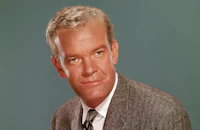Produced by fiat of former Warners head of production Dick Shepherd (emboldened by the success of The Exorcist, 1973), It's Alive fell victim to a regime change that occurred when Shepherd quit Warners for MGM. Disowned by its home studio, the film was dumped into a single Chicago bijou before being remaindered to the ass-end of double and triple bills. Encouraged by praise from overseas (It's Alive was exhibited at the Cinémathéque Française in Paris and became Warner Bros.' highest-grossing release in Singapore, second only to My Fair Lady, 1973), Cohen kept hope alive. When the players at Warners changed seats yet again, he showed the film to marketing executive Arthur Manson, who concurred with head of distribution Terry Semel (later CEO of Yahoo!) that they had a potential hit on their hands. It's Alive was given a proper re-release in March 1977 and, later that year, was booked by Warners as a co-hit in support of Exorcist II: The Heretic.
Conceived in the aftermath of such scandals as Watergate and thalidomide-born birth defects, at a time when the so-called Generation Gap seemed stretched to its absolute limit, It's Alive reflects the fears of parents about the nature and implications of procreation. While recalling the sundry monstrosities of Greek mythology (Cohen hired New York actor John Ryan to play Frank Davis, a businessman whose newborn child tears its way from the womb and wreaks havoc across Western LA on its journey home, after seeing him play Agamemnon on Broadway to Irene Papas' Medea), Cohen also imbues It's Alive with a canny sense of film history. While Rosemary's Baby (1968) is an obvious precursor, Cohen's use of the Los Angeles River Basin forges a kinship with the noir classics He Walked by Night (1948) and The Third Man (1949), as well as the big bug scare film Them! (1954).
The specter that haunts It's Alive most thoroughly is Mary Shelley's immortal manmade man, the Frankenstein monster. Cohen cadged his title from the iconic scene in James Whale's 1931 film adaptation of the Shelley novel, in which Colin Clive (as Dr. Henry Frankenstein) heralded the birth of Boris Karloff's unnamed monster with "It's alive! It's alive!" Midway through the Cohen film, Frank Davis (fittingly, a public relations man obsessed with image) ruminates on his perceived fraternity with that most infamous maker of monsters:
"When I was a kid, I always thought the monster was Frankenstein. Karloff walking around in these big shoes, grunting. I thought he was Frankenstein. Then I went to high school and read the book and I realized that Frankenstein was the doctor who created him. Somehow, the identities get all mixed up, don't they?"
As with the Universal Frankenstein, It's Alive spawned its own share of sequels -It Lives Again (1978) and It's Alive III: Island of the Alive (1987) - as well as a 2008 remake shot in Bucharest.All too fittingly, It's Alive marked the ending of one Hollywood career and the birth of another. Composer Bernard Herrmann, long since on the outs with frequent collaborator Alfred Hitchcock, agreed to score Cohen's film as long as he could record his symphonic shades of terror at the storied St. Giles without Cripplegate, a Gothic church in the heart of London's Barbican. (Herrmann would compose scores for Brian De Palma's Obsession and Martin Scorsese's Taxi Driver before his 1975 death, but his cues from It's Alive were repurposed for the first sequel.) Design of the problematic Davis child was the work of 23 year-old Rick Baker. Baker had assisted veteran makeup man Dick Smith on the set of The Exorcist but would soon distinguish himself for his own work on such films as the 1976 King Kong remake, Star Wars (1977), and An American Werewolf in London (1981), for which he won the inaugural Academy Award for Best Makeup and Hair Styling.
By Richard Harland Smith
Sources:
It's Alive DVD audio commentary by Larry Cohen
Larry Cohen interview by Andrea June and V. Vale, RE/Search: Incredibly Strange Films, no. 10 (RE/Search Publications, 1987)
"Auds have hankering for horror" by Jonathan Bing, Variety, November 30, 2003
Richard Shepherd obituary by Mike Barnes, The Hollywood Reporter, January 15, 2014
























